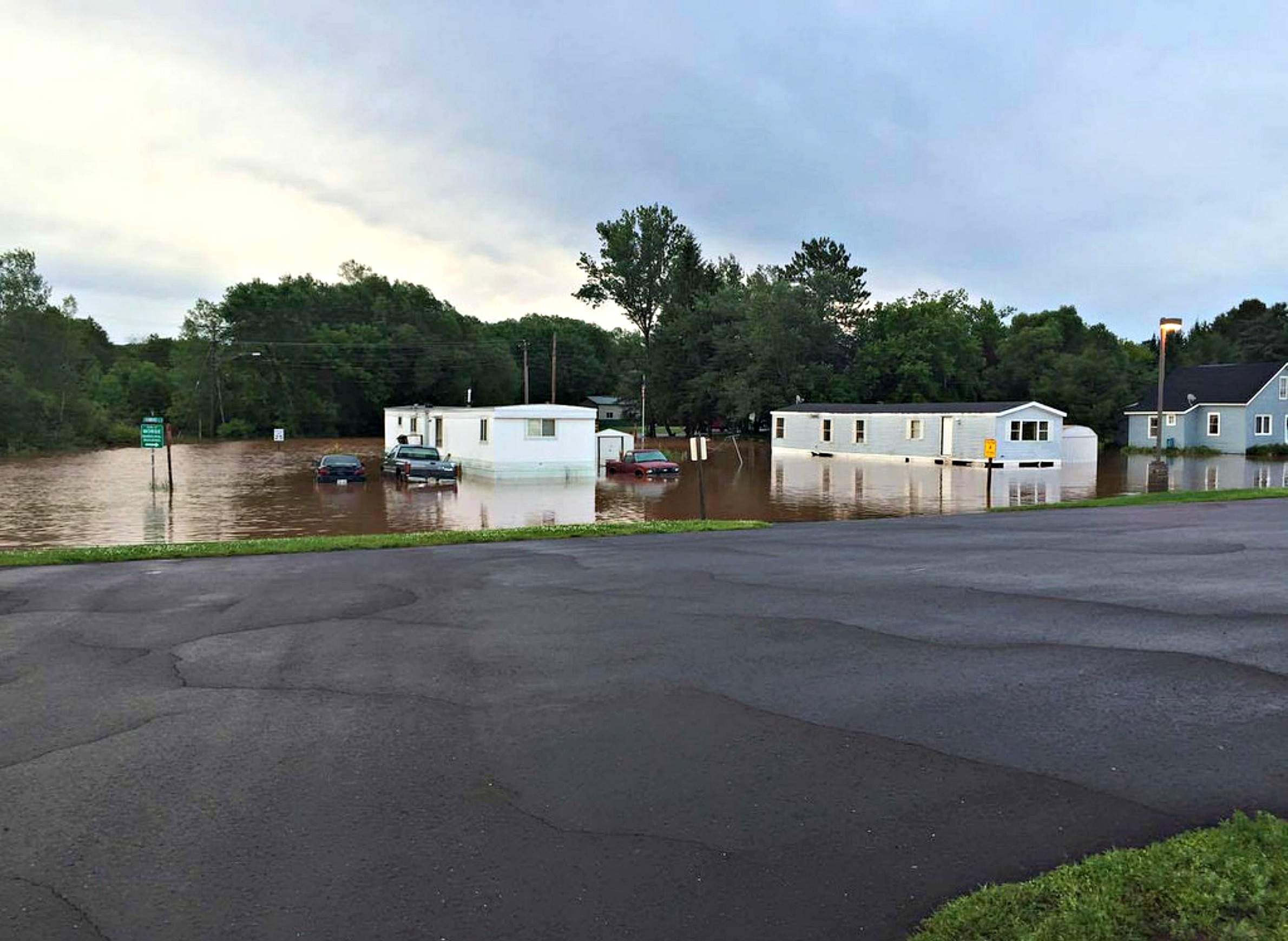More Rain Means More Bacteria And Viruses In Groundwater
Published on by Naizam (Nai) Jaffer, Municipal Operations Manager (Water, Wastewater, Stormwater, Roads, & Parks) in Academic
Wisconsin scientists helped pioneer the study of bacteria and viruses in groundwater. Their research has discovered that microorganisms can occur deeper underground and live longer than previously assumed.

They’ve also analyzed whether more people get sick when utilities don't disinfect their drinking water — and they do, especially children.
A Florida State University professor looked to Wisconsin for another first in this line of inquiry — investigating how climate change might make people more vulnerable to groundwater-borne pathogens in the decades ahead.
In an article published in the January 2017 issue of Hydrogeology Journal , FSU geography professor Christopher Uejio and his collaborators reported how they used computer modeling to project how higher levels of precipitation and non-disinfection of groundwater might affect gastrointestinal illness in children between the years 2046 and 2065 in five communities in Rusk County in northern Wisconsin: Ladysmith, Bruce, Tony, Glen Flora and Hawkins. In the worst case, Uejio found the rate of GI illnesses among children in these areas could grow by a little over four percent — a marginal increase, but an indication that an existing public health problem will persist over the long run where communities don't disinfect their water.
"In my opinion, really the big story is that we have an existing health disparity and we have the tools and knowledge to address it, and we don't have to wait for something to be invented," Uejio said. "Climate change is really a secondary or even a tertiary effect here."
Several dozen municipal water utilities around Wisconsin serving nearly 65,000 people do not disinfect their drinking water — nearly all rely on groundwater. The U.S. Environmental Protection Agency requires that utilities drawing water from lakes or rivers disinfect their water, but there are no such federal or state requirements for groundwater. Most of the public drinking water utilities in the state are small, serving only a few thousand, a few hundred or even a few score people.
In Uejio's study, the largest utility included, Ladysmith's, serves a little over 3,600 people, while the smallest, Glen Flora's, serves just over 90. With a small number of ratepayers, a utility doesn't have much money to upgrade its treatment processes. Some don't even have a full-time water manager. Modest budgets, public aversion to treatment chemicals, and a lack of regulation all help explain why some utilities don't use disinfection processes to kill pathogens.
To compound the problem, rural areas around the state, including Rusk County, are in the midst of a long-term population decline. This change will decrease the number of households paying water bills in rural communities. However, according to Uejio's projections, even with a shrinking population, the rate of water-borne illnesses won't decrease.
Climate change plays a role in drinking-water safety because climatologists project rainfall levels to gradually increase in Wisconsin as the atmosphere warms, as well as a greater frequency of extreme rain events.
Plentiful and vulnerable groundwater
Groundwater is among Wisconsin's most abundant resources, but it's more vulnerable to contamination from the surface than elsewhere. Much of the state, including parts of northeast and northwest Wisconsin, have a geology called karst, in which limestone or dolomite bedrock is shot through with cracks and fissures. These fractures are great for groundwater levels, because they allow a lot of rainwater and snowmelt inflow that recharges the supply. But the downside is that pollutants can get into groundwater with similar ease.
In places like Kewaunee County, karst geology provides conditions for a concentration of large dairy farms to contaminate water. As more precipitation seeps into the ground, it also overwhelms natural filtration that soil and sand provide, a process emulated in household water filters and municipal drinking-water treatment.
"It's of the right chemical constituency that actually de-sorbs pathogens from soil," said Mark Borchardt, a Wisconsin-based microbiologist with the U.S. Department of Agriculture, about rainwater. He has collaborated with Uejio and led some of the key research the new report builds on.
"Bugs that are hung up and stuck [in the soil] would remain stuck, and once precipitation changes, they are released," Borchardt added.
Accelerating that process could have significant public health consequences. Uejio combined previous data on waterborne illnesses with several different models projecting how climate change might increase precipitation levels in northern Wisconsin. He found that if the studied utilities don't disinfect the groundwater they source, children who drink it are likely to have higher incidences of gastrointestinal illnesses.
He also examined models in which utilities add disinfection at either modest or rapid rates. The study concluded that disinfection treatment could reduce the amount of gastrointestinal illness attributed to more precipitation by as much as 82 percent.
Read more at: Wis Context
Media
Taxonomy
- Groundwater
- Flood Modeling
- Water Supply
- Water Supply & Drainage
- Urban Drainage System
- Groundwater Pollution
- Flood damage
- Flood prediction
- Flood Insurance